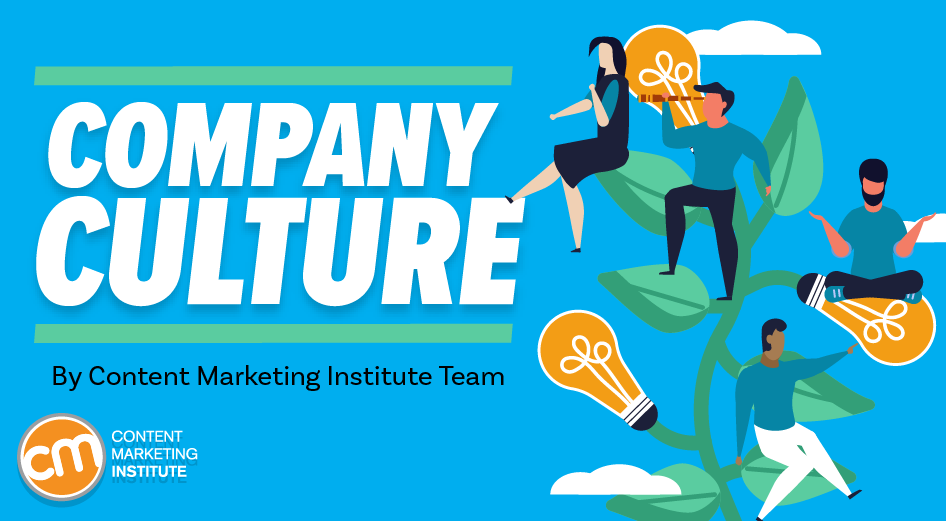MARKETING
Company Culture Importance Rises – Content Marketing Institute

Every company has a culture, but only the successful have the ability to change theirs.
New research points to a lot of companies knowing they need to get better but failing to address the one key component.
This week, B2B marketing research firm Ascend2 released new research with the Arbinger Institute – Creating a High-Performance Culture: The Role of Company Culture in Driving Success (registration required).
CMI’s chief strategy advisor Robert Rose shares his thoughts in this week’s CMI News video. Watch it below, or keep reading for the highlights:
88% of leaders in @Arbinger @Ascend2research survey say the importance of company culture will increase significantly this year, says @Robert_Rose via @CMIContent. Click To Tweet
Improving the business’ culture brings more than worker satisfaction. Almost half (46%) of the leaders say it leads to increased productivity, and 40% indicate it improves retention. Interestingly, only 26% say it increases revenue; the same number think it improves communication and collaboration.
Robert says these findings suggest a culture’s benefit centers on efficiency – more employees stay longer and do more stuff – rather than growth opportunities for the business.
Hurdles to better culture
More interesting, Robert says, the top challenges for improving company culture relate to changing habits of how people work together – evolving the strategy, staying consistent, having the resources to implement changes, employee adoption, and creating a strategy to track performance. And his favorite hurdle? Buy-in from leadership.
The report reveals the ironic conclusion: 90% of executives say the importance of company culture is increasing, yet 25% of decision-makers struggle to get buy-in from the rest of the leadership team.
“Businesses want to change the culture as long as they don’t have to change anything,” Robert says.
Businesses want to change the culture as long as they don’t have to change anything, says @Robert_Rose via @CMIContent. Click To Tweet
Reflect on culture’s meaning
Robert advises you to take a step back and ask, “What the heck is culture anyways?”
Too often, companies reduce culture to something like shared values or balancing work tasks and employee engagement. Over the last 15 years, this thinking translated into casual work attire and flexible work environments. As this research highlights, culture encompasses diversity, equity, inclusion programs, leadership training, and performance tracking.
While those ideas aren’t wrong, Robert says they complicate a simple idea. “Company culture is the institutional habits of how you work together,” he says.
Think habits
Edgar Shein, a leading researcher in the field, says culture is a “pattern of basic assumptions” group members acquire over time as they learn to cope successfully with internal and external organizationally relevant problems. In other words, when you answer the question of how to do something and include “that’s the way it’s always been done,” that’s culture.
“Changing culture isn’t just changing the way the business works. It requires changing how the business has ‘always worked,’” Robert says. “It requires breaking habits, which sometimes can be hard.”
Changing culture isn’t just changing the way business works. It requires breaking habits, says @Robert_Rose via @CMIContent. Click To Tweet
As marketing and content practitioners, you see this every day. You are changing the organization’s culture when you deploy new marketing operations, content strategies, storytelling capabilities, and content marketing initiatives. It’s not easy.
The Ascend2 research concludes a “shift in mindset” enables better outcomes for improving culture. Robert doesn’t disagree, but he suggests breaking that down to view them as habit changes.
He subscribes to the teaching that developing better habits doesn’t require the bad habits you have. It should involve creating new, good habits to break those bad habits.
Whether changing workflow, introducing a new content operational process, a new brand strategy, an internal performance measurement program, a DEI program, or a leadership training initiative, you create a new culture, not change the existing one.
“It takes time. In the short term, the main goal shouldn’t be efficiency. It should be investing in a new culture – new habits – to evolve the business,” Robert says.
How is your team creating new cultures? Let us know in the comments.
HANDPICKED RELATED CONTENT:
Cover image by Joseph Kalinowski/Content Marketing Institute

















